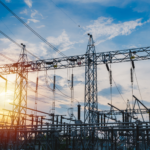Troubleshooting power system failures is a critical process to ensure reliability, safety, and efficiency in electrical networks. Whether in industrial, commercial, or residential settings, a systematic approach is required to identify and resolve power system issues effectively. Below is a step-by-step guide to troubleshooting power system failures.
1. Identify the Symptoms
Before taking any action, it is essential to gather information about the failure. Common symptoms of power system failures include:
- Complete power outage (total blackout)
- Voltage fluctuations (undervoltage or overvoltage)
- Frequent tripping of circuit breakers
- Overheating of equipment
- Unusual noises, sparks, or burning smells
- Malfunctioning or damaged electrical components
Action Step:
- Ask operators or users if they noticed unusual behavior before the failure.
- Check the load and power consumption trends.
- Review system logs or alarms if available.
2. Perform a Visual Inspection
A visual inspection helps identify obvious faults or damages. Look for:
- Damaged wires or connections
- Burnt or discolored components
- Tripped circuit breakers or blown fuses
- Loose terminals or signs of overheating
Action Step:
- Inspect power distribution boards, transformers, switchgear, and panel connections.
- Use infrared thermography to detect overheating points.
- Ensure personal protective equipment (PPE) is worn for safety.
3. Check the Power Source
Problems can originate from the power grid, generators, or renewable energy sources. Ensure:
- The main power supply is active and meets voltage standards.
- Standby power sources (generators, inverters, UPS) are functional.
- Transformer and switchgear operations are normal.
Action Step:
- Use a voltmeter or power analyzer to check incoming supply voltage.
- Inspect the substation or transformer station for failures.
- Verify generator and battery backup systems.
4. Analyze Circuit Protection Devices
Protection devices (circuit breakers, relays, fuses) help prevent electrical damage. If they are tripping frequently:
- Determine if it’s an overload, short circuit, or ground fault.
- Check for loose connections, moisture, or deteriorated insulation.
- Inspect protective relay settings and adjust if necessary.
Action Step:
- Reset tripped breakers and check if the issue persists.
- Test circuit breakers and relays for proper operation.
- Replace blown fuses with correct-rated ones.
5. Test Electrical Components and Load Conditions
Faulty electrical components can cause system failures. Check:
- Transformers, motors, and capacitors for internal faults.
- Harmonic distortions and power quality issues.
- Load imbalances across phases that may lead to overheating.
Action Step:
- Use a multimeter or insulation resistance tester (megger) to check components.
- Conduct load flow analysis to identify unbalanced loads.
- Inspect power factor correction devices.
6. Monitor and Record System Parameters
Using real-time monitoring tools can help diagnose failures. Key parameters to check include:
- Voltage, current, and frequency deviations
- Harmonics and transient disturbances
- Energy consumption trends
Action Step:
- Use SCADA (Supervisory Control and Data Acquisition) for remote monitoring.
- Record fault occurrences and their impact.
- Compare historical data to identify patterns.
7. Isolate and Repair the Fault
Once the fault is identified:
- Isolate the faulty section of the power system.
- Replace or repair defective components (e.g., cables, fuses, relays).
- Perform necessary maintenance to prevent future failures.
Action Step:
- Implement lockout/tagout (LOTO) procedures for safety.
- Test the system before restoring full operation.
8. Prevent Future Failures
After troubleshooting and restoring power, implement preventive measures:
- Schedule regular maintenance and inspections.
- Improve protection coordination and fault analysis.
- Educate personnel on power system best practices.
Action Step:
- Maintain a logbook of past failures and resolutions.
- Upgrade aging infrastructure where needed.
- Install condition monitoring systems for early fault detection.
Conclusion
Effective troubleshooting of power system failures requires a methodical approach, from symptom identification to fault isolation and repair. By implementing preventive measures and real-time monitoring, power system reliability can be significantly improved. Always prioritize safety and use appropriate tools when diagnosing and resolving electrical faults.





